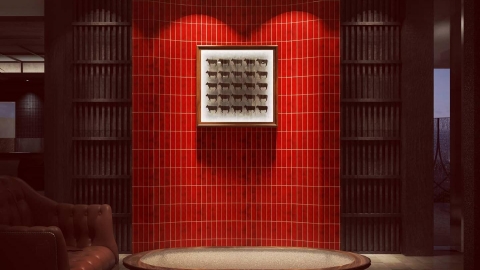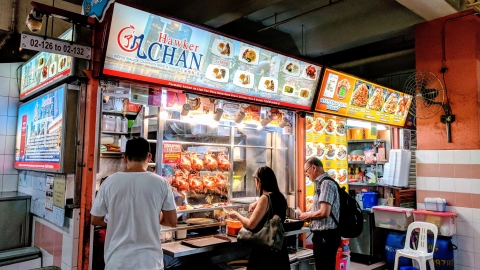Omakase comes from the Japanese phrase “Makasu” which means “to trust, to entrust something”. For the people of the land of the rising sun, Omakase culture in cuisine has become familiar, even necessary. Follow Travellive to learn about 03 extremely unique Omakase restaurants in Hanoi.
Omakase and diners' trust when dining
Omakase is not a long-standing culture of this land of the rising sun. Omakase only really appeared and became popular in the 80s and 90s of the last century with the purpose of helping customers feel less confused when they do not know what to order, or do not have much knowledge about food. They decided to let the chef "direct" their meal and just enjoy it.
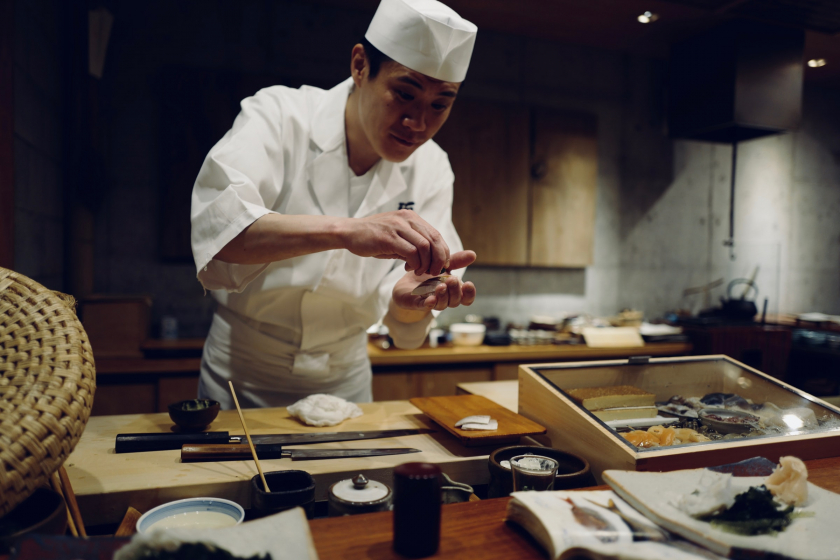
"Have absolute trust in the chef's ability" is the philosophy of Omakase.
Omakase helps diners and chefs interact more. If in normal Japanese restaurants, customers order from the menu, wait for the food to be served, enjoy it and pay, with the Omakase model, they get much more than that.
Restaurants serving this model will often invite you to sit at the counter (if you do not need to sit separately or receive guests) to directly watch the chef operating and performing his skillful techniques. At the same time, the chef when serving the dish will introduce the origin of the ingredients or extremely useful knowledge of that dish. Diners can ask the chef himself about the dish they are watching, or even a cultural story behind it.
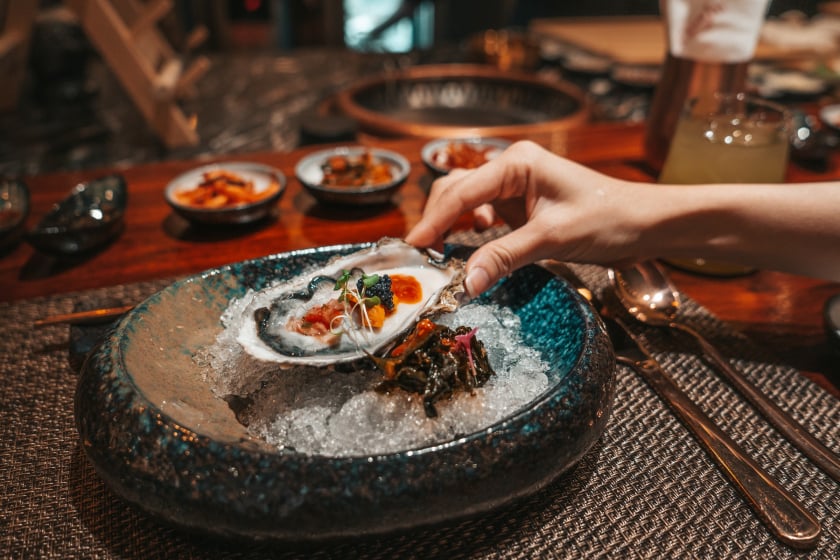
The dishes served in this model are often extremely high-class.
After finishing the meal, they will usually receive a bill for the total cost of the meal, instead of the price of each individual dish. Omakase emphasizes the experience and surprise of each meal, instead of serving everything in a rigid, uncreative framework. This is considered a style of enjoying food with a strong “edomae” - that is, the refined dining style of ancient Edo.
Suggestions for 03 Omakase restaurants in Hanoi
Sushi Uminohana
Located on the small, bustling Phan Ke Binh street, Umiohana impresses with its simple decor, focusing on the quality of the food and attentive, thoughtful service.

Uminohana impresses with the richness and freshness of its sushi portions.
Uminohana is strong in sushi and sashimi dishes with carefully selected imported ingredients. This is also a restaurant that emphasizes freshness and the "seasonal" factor typical of the Japanese. The types of fish at Uminohana are diverse and of high quality. Not only fish, other seafood such as shrimp (ebi), crab (kani), clams, oysters, black abalone, sea urchin (uni) are also changed regularly to increase the creativity of each menu.
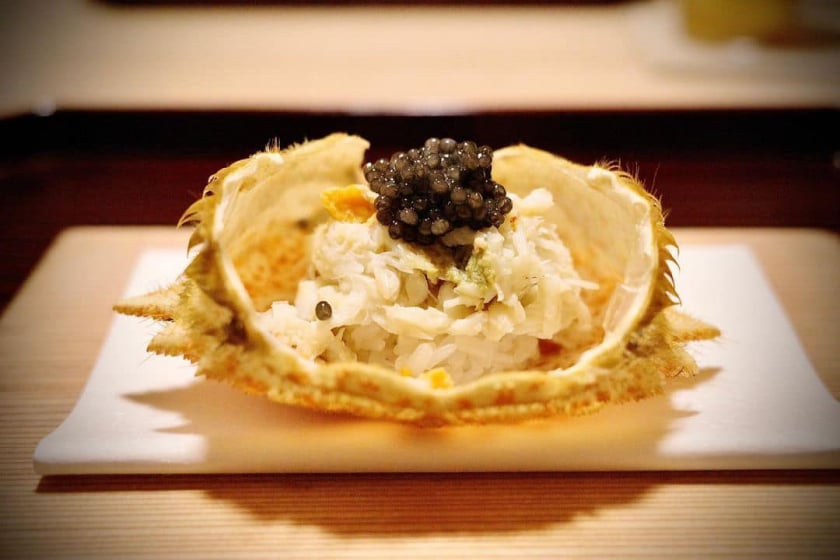
A portion of Kurikani with ingredients imported directly from Hokkaido at Uminohana restaurant.
One point that may not appeal to many people is the way the dishes are decorated, which is too simple and lacks creativity. Uminihana maintains a very “Japanese” principle with a simple presentation, focusing on the food in front of you rather than the sophistication and splendor.
Kappou Ishida
Kappou Ishida is located on the airy Nguyen Dinh Thi street, right next to West Lake. This is also the place that attracts more Japanese visitors than other Omakase locations in Hanoi.
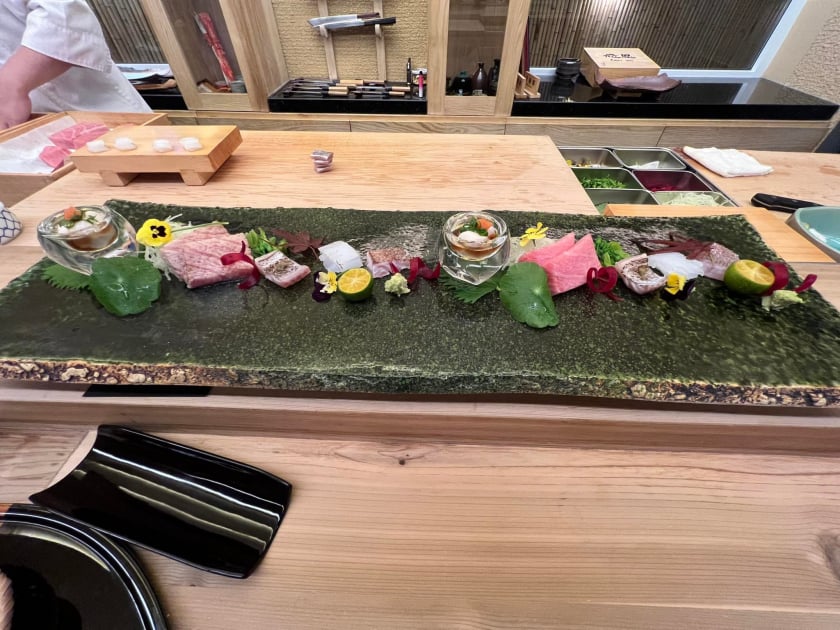
An attractive set menu at Kappou.
Kappou impresses more than other restaurants with its extremely beautiful and harmonious food presentation in the true Japanese spirit. Flowers and leaves are used thoroughly to make the dishes more lively, and are often edible flowers and leaves. Regarding ingredients, Kappou focuses on freshness and constantly changes the menu to create many surprises for diners. Instead of just focusing on fish and seafood, this place also sells premium Wagyu beef.

Another light and airy set menu, perfect for lunch.
The restaurant has a spacious space, overlooking the West Lake, which is extremely pleasing to the eye. Instead of focusing only on fish and seafood, this place also sells Ozaki beef - a premium Wagyu beef.
Nuboko Sushi & Teppanyaki
This is a new restaurant in Hanoi, located on Ly Thuong Kiet street. By pursuing the unique Omakase model, Nuboko has brought rich dining experiences to diners.
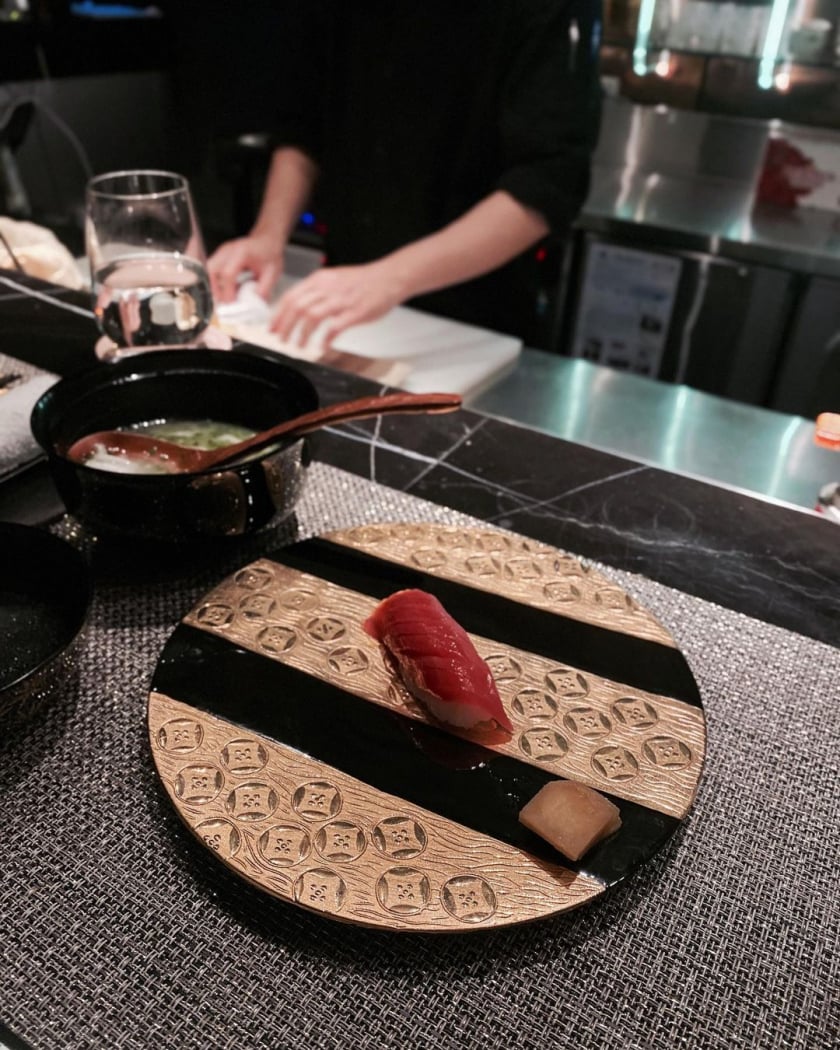
A beautiful portion of shiny red tuna sushi.
Each meal will be introduced in detail by the waiter, followed by the chef's "performance". Even while focusing on cutting fish and making sushi, they can tell diners many stories about the ingredients and the dish they are making. It can be seen that the restaurant places great importance on the interaction between customers and the chef. In addition to serving fish and seafood, the restaurant also has premium beef and homemade desserts.
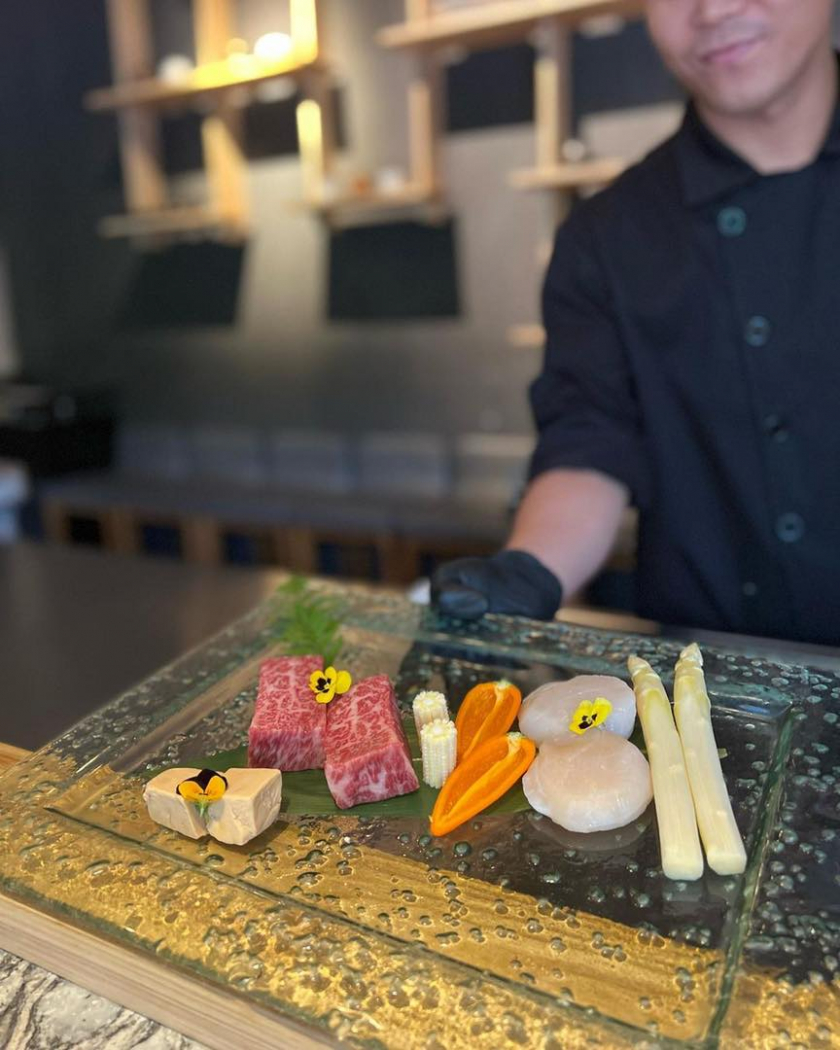
The chef will serve directly at the counter.
A small note is that the restaurant is not very easy to find. However, the quality of the food and the friendly service will make you want to come back a second time.
The common point of all three restaurants mentioned above is that the prices are quite high compared to the general level of other Japanese restaurants. This is not too difficult to understand because these are all places that focus on the high-end customer segment. The great point of restaurants pursuing the Omakase model is the absolute freshness of the ingredients, the talent of the chef and the quiet space for diners to fully enjoy the meal.
Hopefully with the above addresses, readers can have more choices about a space as well as a diverse and unique culinary style, where you can put your complete trust in the chef standing in front of you.

























